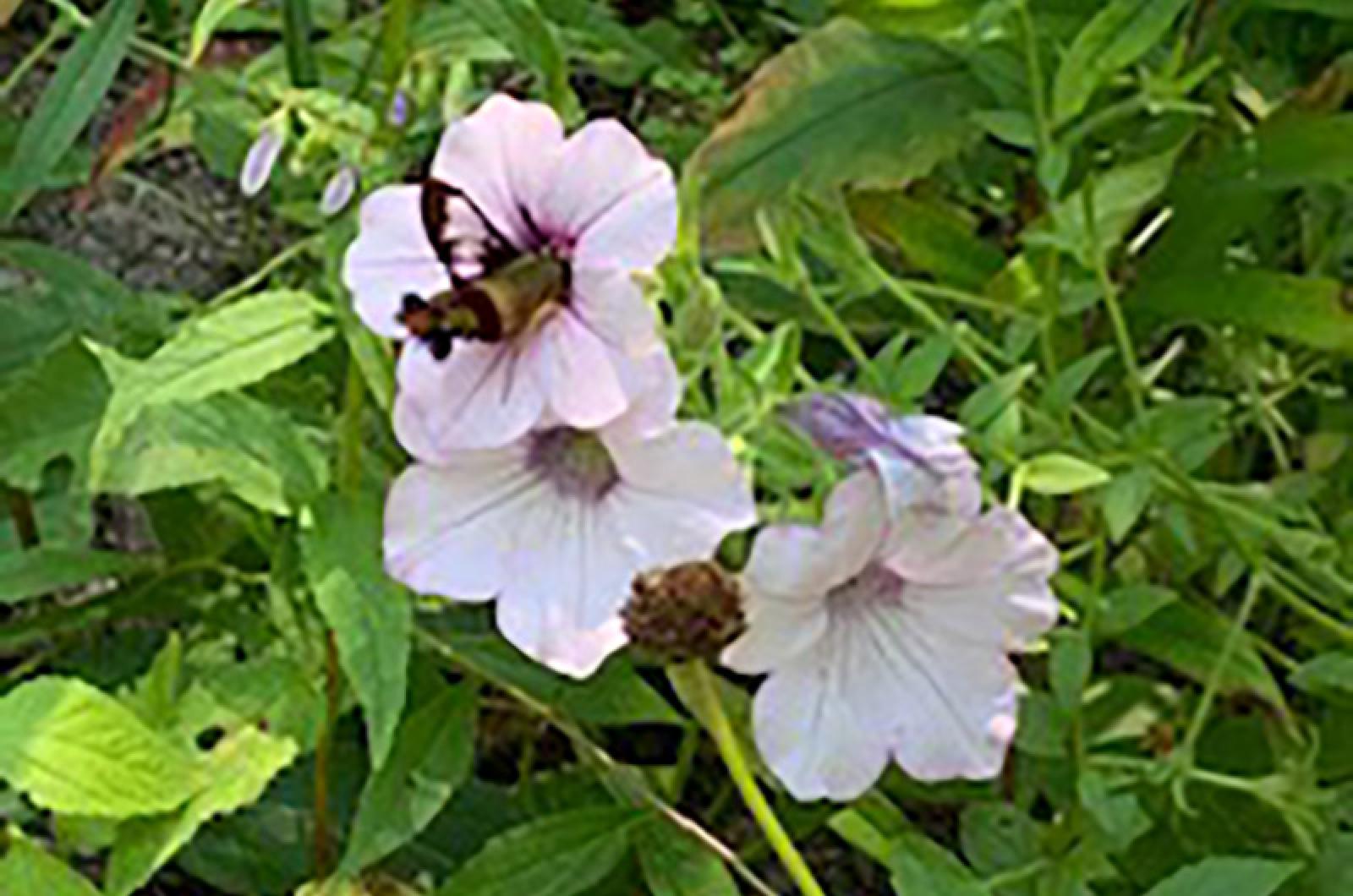If it looks like a hummingbird and sounds like a hummingbird, it must be a hummingbird, right?
Maybe . . . or maybe not. A closer look at the fleeting creature showed an antenna, proboscis and three pairs of legs. Never heard of a six-legged bird. So, one could consider its fuzzy, stocky yellow and reddish body and speculate that it must be a bee. Wrong again, in the case of the clearwing hummingbird moth.
If you spy this aerial acrobat, it could easily be a case of mistaken identity. Clearwing hummingbird moths move fast and act and look as though they have borrowed body parts and stolen behaviors from other animals. The build of a bee, the flight of a hummingbird, and the tail of lobster all make for an intriguing animal.
Clearwing moths are mesmerizing. Unlike most moths, they are diurnal, or, active during the day. Perhaps that is how they got their genus name, Hemaris, which could be derived from the Greek hemara, meaning day, or alternately, the shortened hema, meaning blood. The latter is descriptive of the red wing scales of one of the common clearwing species, Hemaris thysbe. Thysbe, of course, comes from the ill-fated lovers Thisbe and Pyramus, who kill themselves, thinking the other is dead. Their spilled blood is reminiscent of those red scales.
These moths are found flitting from plant to plant in a method very similar to hummingbirds. Their wings beat fast, though slower than a hummingbird’s, and make a similar buzzing sound. Like their namesake, clearwing moths can hover and fly forward, backwards and sideways. Clearwing moths are smaller, about half the size of the larger, yet still-petite bird.
The similarities are the result of convergent evolution, the happenstance of different species acquiring the same traits that will help them survive in their environment. Being a look-alike might also provide protection to the hummingbird moth, as it might be mistaken for the bird, perhaps scaring away predators that would hesitate to take a bird but would gobble up an insect without a second thought.
Hummingbirds and clearwing moths frequent the same types of flowers for nectar, though they use distinctively different adaptations for drinking the sweet flower juice. Birds, of course, have a beak, while the moths have a tongue-like proboscis. This tool is impressive, measuring more than two times the length of the moth’s body. Because of that lolling length, they must fold it under their chin when not using it to take a drink.
Active during the summer, clearwing moths are out now, looking for vegetation on which to lay their eggs. Honeysuckle, dogbane, and plants in the rose family — including hawthorn, cherry and plums — are preferable for their eggs since the caterpillars that will emerge will need to eat the leaves of those plants to grow and thrive.
The caterpillar form of these insects are members of the dreaded hornworm crew, cousins to the cretins that frequent your tomato plants and can destroy your harvest. They differ enough visually and by choice of food that you shouldn’t mistake them.
Consider your luck in observing either of these spiffy hummer species. You will be in good company: they inspire many, including crooner Leonard Cohen, who enthused, “I always loved those little creatures [hummingbird], always feel blessed when they appear nearby. There’s a magical quality to them. I finally put one in a song.” The clearwing hummingbird moth may not have been the muse, but no matter: small, agile, and fascinating seems to be enough for them.
Suzan Bellincampi is Islands director for Felix Neck Wildlife Sanctuary in Edgartown and the Nantucket Wildlife Sanctuaries. She is also the author of Martha’s Vineyard: A Field Guide to Island Nature and The Nature of Martha’s Vineyard.




Comments
Comment policy »